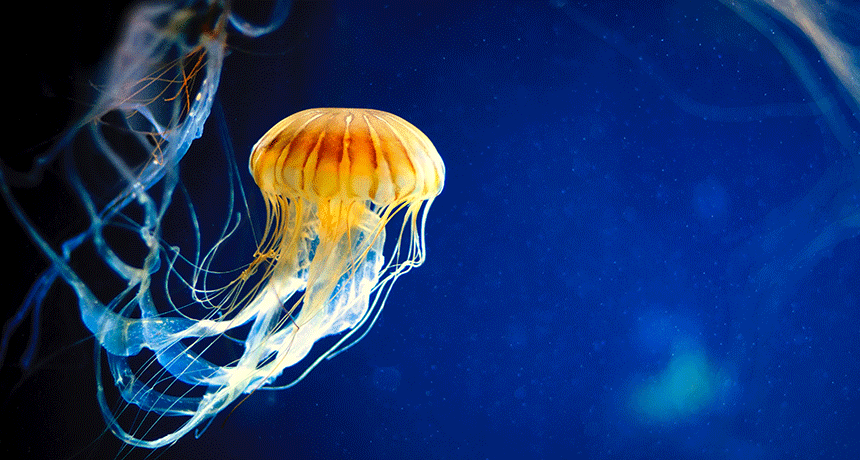cell The smallest structural and functional unit of an organism. Typically too small to see with the unaided eye, it consists of a watery fluid surrounded by a membrane or wall. Depending on their size, animals are made of anywhere from thousands to trillions of cells. Most organisms, such as yeasts, molds, bacteria and some algae, are composed of only one cell.
coral Marine animals that often produce a hard and stony exoskeleton and tend to live on reefs (the exoskeletons of dead ancestor corals).
harpoon A spear-like weapon that is thrown to pierce an aquatic animal. It’s barbed or hooked head keeps the weapon attached to the animal. An attached rope can then be pulled in, bringing the animal to a hunter’s boat. A harpoon may also be any latching device that pierces a surface to hold onto it.
jellies (in biology) These are gelatinous animals that drift in water (mostly seawater) or brackish (semi-salty) estuaries. For more than 500 million years, they have moved around the oceans by pumping pulses of water through their jelly-like tissue. Their body often has an umbrella-shaped bell. Trailing from around a central mouth may be many tentacles. Although jellies don’t have brains, they do have a nervous system which can sometimes detect light, movement or certain chemicals. Some members of this family, known as cnidarians, are known as jellyfish. In fact, none are true fish but related to hydras and corals.
nematocyst Stinging cells in the tentacles of jellyfish, hydra and related animals. The toxins released by these cells help immobilize prey and ward off attackers.
prey (n.) Animal species eaten by others. (v.) To attack and eat another species.
venom A poisonous secretion of an animal, such as a snake, spider or scorpion, usually transmitted by a bite or sting.

